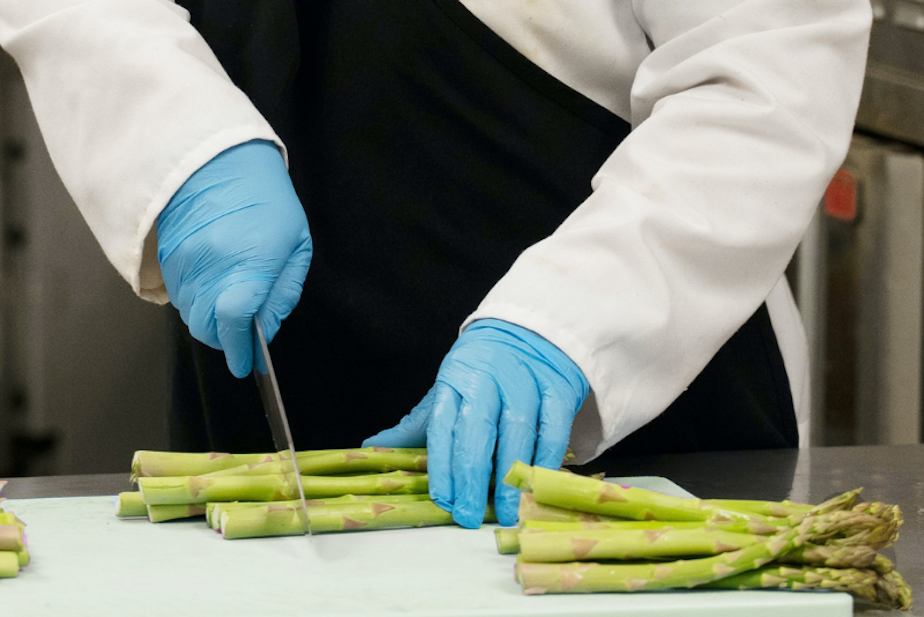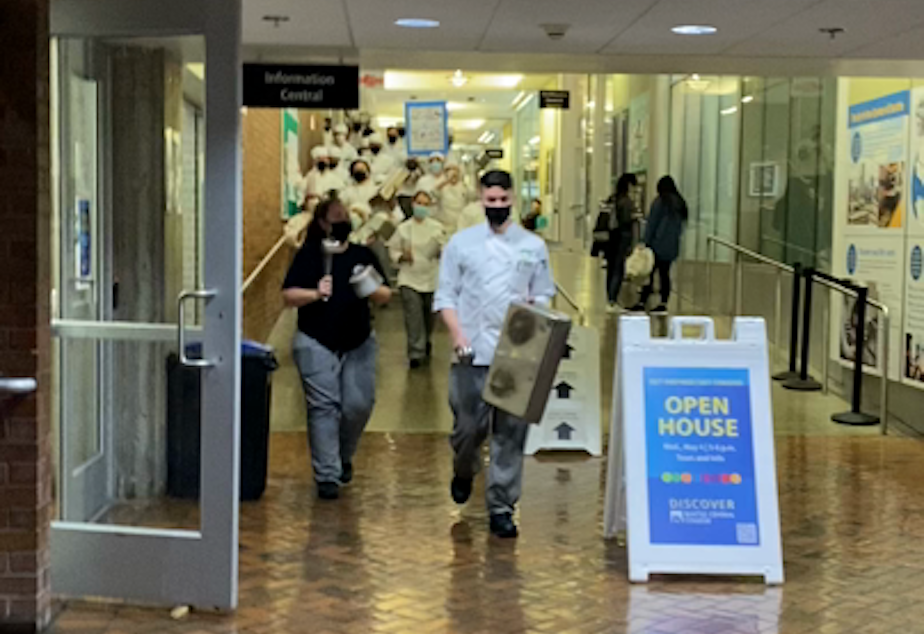Seattle College trade programs still seek long-term funding

For decades businesses have relied on community colleges to help train the workforce. But now the community college system is facing a multimillion-dollar deficit and an uncertain future at a time when companies are struggling with labor shortages. Earlier this month, the culinary school and other trade programs were slated for closure. They got a reprieve, for now. But the financial woes, years in the making, haven’t gone away.
Elizabeth Petrea was relieved when she heard the culinary program had been spared. She graduated last December. But she plans to return for more training in baking and pastry arts.
Petrea came to Seattle Central after a 22-year career in the Navy. She said she was drawn to the program by the instructors’ knowledge and their passion.
“You can hear it in their voices,” Petrea said. “They are, despite being in the industry 20 to 30 years, still excited to cook every day as they were in day one. They are an incredible group of instructors.”
For decades community colleges served a variety of students, from people like Petrea seeking a career change, to students making their way to a four-year degree, to those who prefer focusing on technical skills offered through the culinary, woodwork or maritime programs.
Those students provide roughly up to 30 percent of the colleges’ revenue.
Sponsored

But enrollment has been declining since 2010, according to a recent analysis by the Washington state Board for Community and Technical Colleges. That decline was around the time when the economy was recovering from the Great Recession.
“Our enrollment patterns are counter cyclical with the economy,” said Choi Halladay, deputy executive director of business operations.
He notes when times are good, students find jobs and tend to put their studies on hold.
“Then as the economy gets worse, and there are unfortunately layoffs, there’s rising unemployment, then they tend to come back to us and look for continuing education and figuring out a way to gain more skills,” Halladay said.
Sponsored
And it’s not just the economy that has affected enrollment. The number of high school students taking college courses has been declining too.
In the past, the colleges were able to stay afloat thanks to revenue from international student enrollment. But at a recent budget forum, interim president Yoshiko Harden noted that foreign policies under the Trump administration put a damper on that.
“It was much more difficult to get student visas than it had been prior to that,” Harden told the audience. “There was apprehension to travel abroad for studies given the rhetoric that was coming out of the country.”
Then, to top it off, the pandemic hit.
As college officials discussed how to close a projected $13 million budget gap, outside the meeting students staged a walkout, banging pots to protest the proposed closures.
Sponsored

 1 min
Students protest proposed cuts to the culinary program earlier this month at Seattle College.
1 min
Students protest proposed cuts to the culinary program earlier this month at Seattle College.
“It’s about keeping the word out and finding the money,” said Natalie Lyons-Cohen, one of the culinary students who marched. “Some of the faculty, administration are doing great networking, talking to people who can do great financial donations because I think it’s going to have to be a private public partnership to make sure the gap is fully filled out, not just for a year but the next 10 years.”
To highlight how critical the culinary program has been to the industry, students designed signs to post at restaurants where they work, or at businesses that have hired graduates.
The board’s Choi Halladay said the financial challenges and the ensuing outcry have prompted discussions with state and local elected officials about sustainable funding, especially for the trade programs.
Sponsored
“There is now, I think, a much more open dialog around how do we handle the financing of programs like that,” Halladay said. “They may not be huge, but they’re critical, and they may be even more vital than anyone assumed in keeping our economic infrastructure going.”
That is especially the case at a time when many industries are struggling to find workers. There are no immediate solutions. But there have been some stopgap moves. The City of Seattle recently donated $1 million to the Maritime Academy, which trains students in trades like commercial fishing and sailing, enough to keep the program open through the upcoming school year.




